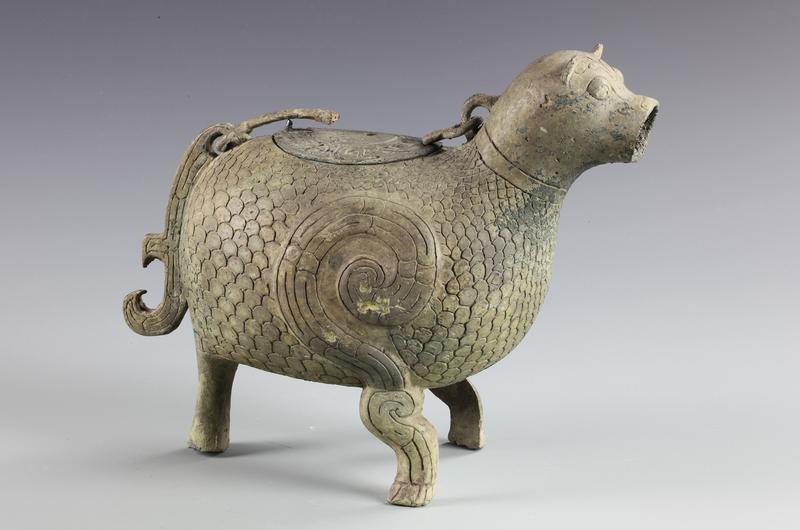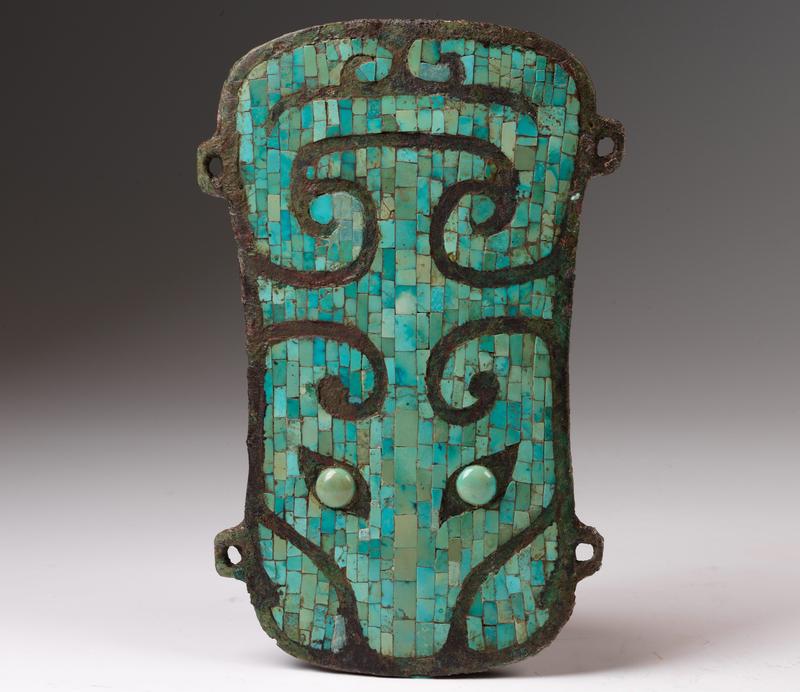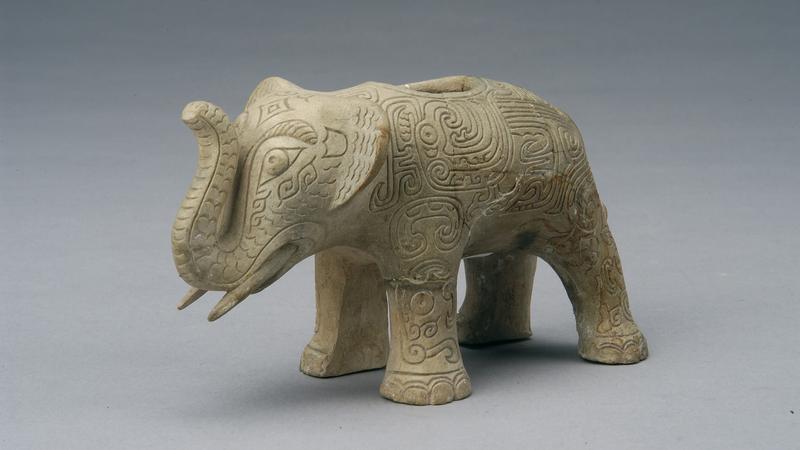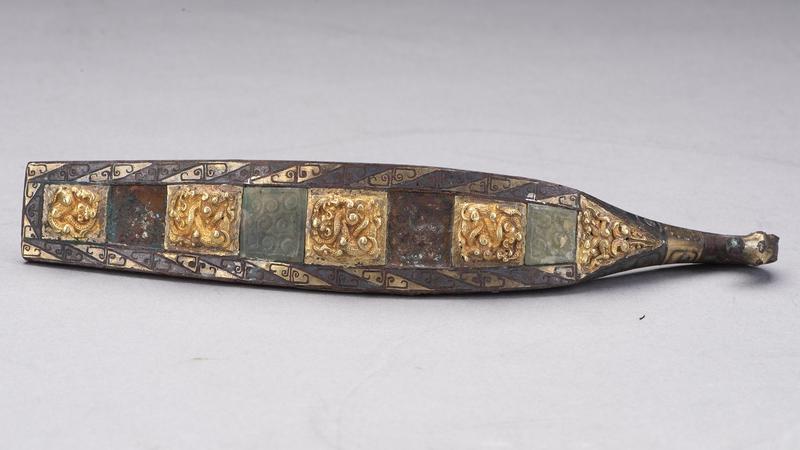Exhibition provides intriguing insight into the first three dynasties of recorded Chinese history, Zhang Kun reports.
 Visitors admire the cultural relics at the exhibition The Making of China: The Civilization of Xia, Shang and Zhou Dynasties, which will run to Oct 23 at Shanghai Museum. (GAO ERQIANG / CHINA DAILY)
Visitors admire the cultural relics at the exhibition The Making of China: The Civilization of Xia, Shang and Zhou Dynasties, which will run to Oct 23 at Shanghai Museum. (GAO ERQIANG / CHINA DAILY)
An exhibition at Shanghai Museum, The Making of China: The Civilization of Xia, Shang and Zhou Dynasties, takes visitors on a journey through time to the beginning of Chinese civilization.
The exhibition, which opened to the public on Saturday and will run to Oct 23, features 314 cultural relics from more than 20 museums, archaeological institutions and research centers in Henan province, as well as discoveries from 89 archaeological sites.
It is so far the most important exhibition at Shanghai Museum this year.
Yang Zhigang, Shanghai Museum’s director
"It is so far the most important exhibition at Shanghai Museum this year," says Yang Zhigang, the museum's director.
The showcase is the first in a series of exhibitions at the museum called The Essence of China that features the nation's cultural relics and archaeological achievements.
"We will join hands with colleagues from all over China, to create this big project," Yang tells China Daily. "I do hope the first exhibition, as well as the collaboration with Henan province, will provide a successful example for future collaborations with more institutions around China."
 An exhibition at Shanghai Museum features 314 cultural relics from over 20 museums, archaeological institutions and research centers in Henan province. (PHOTO PROVIDED TO CHINA DAILY)
An exhibition at Shanghai Museum features 314 cultural relics from over 20 museums, archaeological institutions and research centers in Henan province. (PHOTO PROVIDED TO CHINA DAILY)
An important relic of the period, zun of He, a Western Zhou Dynasty (c.11th century to 771 BC) bronze wine vessel (zun), has inscriptions recounting the construction of Chengzhou (today's Luoyang city in Henan) by King Cheng of Zhou. Within the inscriptions is the phrase zhaizi zhongguo ("located in the capital city"). Historians believe this to be the first mention of zhongguo, or, China, in ancient times.
Though the relic is not present in the current exhibition, as it is housed at Baoji Bronze Ware Museum in Shaanxi province, Shanghai Museum chose the phrase zhaizi zhongguo as the Chinese title for the exhibition because it encapsulates the theme-about the formation of China's national identity, says Yang.
 An exhibition at Shanghai Museum features 314 cultural relics from over 20 museums, archaeological institutions and research centers in Henan province. (PHOTO PROVIDED TO CHINA DAILY)
An exhibition at Shanghai Museum features 314 cultural relics from over 20 museums, archaeological institutions and research centers in Henan province. (PHOTO PROVIDED TO CHINA DAILY)
Henan, located in Central China, was the core region of the first three dynasties of recorded Chinese history: Xia (c. 21st century-16th century BC), Shang (c. 16th century-11th century BC) and Zhou (c.11th century-256 BC). About 5 millennia ago, civilizations began to emerge in that region. Around 4,000 years ago, tribal civilizations converged into one in the area around today's Luoyang. That was when the Xia Dynasty also started.
In the 1950s, archaeologist Xu Xusheng discovered the Erlitou site, which is believed to be the capital of the Xia Dynasty, in Yanshi, a district in Luoyang.
 An exhibition at Shanghai Museum features 314 cultural relics from over 20 museums, archaeological institutions and research centers in Henan province. (PHOTO PROVIDED TO CHINA DAILY)
An exhibition at Shanghai Museum features 314 cultural relics from over 20 museums, archaeological institutions and research centers in Henan province. (PHOTO PROVIDED TO CHINA DAILY)
Today, Erlitou Culture, centered on Luoyang but also found in parts of Shanxi, Shaanxi and Hebei provinces, is recognized as a vital development in the history of the Chinese civilization, according to Tian Kai, director of the Henan Provincial Administration of Cultural Heritage.
One of the highlights of the current exhibition is a bronze ding (food vessel) that dates back to the 18th-16th century BC. Unearthed from a tomb at the Erlitou site in 1987, it is the earliest bronze ding discovered by archaeologists in China and is evidence of the presence of royalty and a hierarchical social system.
 An exhibition at Shanghai Museum features 314 cultural relics from over 20 museums, archaeological institutions and research centers in Henan province. (PHOTO PROVIDED TO CHINA DAILY)
An exhibition at Shanghai Museum features 314 cultural relics from over 20 museums, archaeological institutions and research centers in Henan province. (PHOTO PROVIDED TO CHINA DAILY)
Another object, a turquoise-inlaid plaque, created in the same period, was also unearthed from a tomb at the Erlitou site. Measuring 16.5 centimeters in height and 11 cm in width, the bronze plaque was found on the chest of the tomb owner, indicating it was used as a pendant.
"It was so well-made that after more than 3,000 years, not a single piece of turquoise fell off," says Zhao Tengyu from the Erlitou Site Museum in Henan.
 An exhibition at Shanghai Museum features 314 cultural relics from over 20 museums, archaeological institutions and research centers in Henan province. (PHOTO PROVIDED TO CHINA DAILY)
An exhibition at Shanghai Museum features 314 cultural relics from over 20 museums, archaeological institutions and research centers in Henan province. (PHOTO PROVIDED TO CHINA DAILY)
The exhibits provide a glimpse of the rituals in society, the formation of the state, and the skills Chinese artisans had in creating bronze and jade objects, says Tian.
"Audiences can witness the evolution of bronze in ancient China, from the earlier objects of the Xia Dynasty that featured simple patterns to the peak of bronze art in the late period of the Shang Dynasty, when rituals and the social hierarchy system reached a new height," he adds.
 An exhibition at Shanghai Museum features 314 cultural relics from over 20 museums, archaeological institutions and research centers in Henan province. (PHOTO PROVIDED TO CHINA DAILY)
An exhibition at Shanghai Museum features 314 cultural relics from over 20 museums, archaeological institutions and research centers in Henan province. (PHOTO PROVIDED TO CHINA DAILY)
At the opening of the exhibition, Shanghai Museum also announced the introduction of its first series of NFT (none-fungible tokens) artworks: a you (wine vessel) from the early Western Zhou period and a bronze square sheng that dates to the Warring States Period (475-221 BC).The sheng is known as China's first standardized unit of measurement.
It is the first museum in China to build a digital collection that is supported by its own blockchain system, says Li Feng, the museum's deputy director.
"With the introduction of this new digital museum, Shanghai Museum will continue to promote Chinese culture and heritage, give cultural relics a new life in the digital age, and make cultural relics and artworks accessible to all, and appreciated by the whole society," says Li.
 An exhibition at Shanghai Museum features 314 cultural relics from over 20 museums, archaeological institutions and research centers in Henan province. (PHOTO PROVIDED TO CHINA DAILY)
An exhibition at Shanghai Museum features 314 cultural relics from over 20 museums, archaeological institutions and research centers in Henan province. (PHOTO PROVIDED TO CHINA DAILY)
He says the museum hopes that the launch of the NFT artworks will "ignite an interaction between ancient Chinese treasures and the young generations".
Appointments to purchase the first batch of Shanghai Museum NFT artworks will open at 10 am on Friday.
If you go
The Making of China: The Civilization of Xia, Shang and Zhou Dynasties
July 30-Oct 23, 9 am-5 pm (last entry no later than 4 pm), Tuesday-Sunday.
Shanghai Museum Exhibition Hall No 1, 201 Renmin Avenue, Huangpu district, Shanghai.
021-6372-3500.
Contact the writer at zhangkun@chinadaily.com.cn


